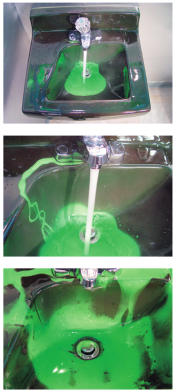The meeting today was more about concept exploration than product design, so this week’s brief will reflect that.
Looking at the ideas we’d selected for exploration last week, the weather box and glanceable oven overlapped in the representation of temperature. Heat-sensitive paint (see video below) seemed like a really exciting way to show this for the oven; what if alll you needed was a new coat of paint for the oven to show its internal temperature?
http://www.youtube.com/watch?feature=player_detailpage&v=2pN2lb5_giA#t=8s
But since the oven is supposed to catch your peripheral vision, maybe an animated display would be more effective; Peltier devices were mentioned as an interesting way to both make energy from the oven’s heat and to cool/heat a surface. By using a thermoelectric device to store heat as electricity, and then using that stored energy to cool the surface, one could animate a thermochromic display.

We found peltier junctions for ~$800 per sq.ft., or with a heat sink of 16 times the area ~$50, which is competitive with granite countertops. That doesn’t include the cost of the sinks, paint or backing, which, let’s say, drives it up to $100 p.sq.ft, still in granite range. However, each tile would be ~6 inches on a side. If the tiles would be that large anyway, it might be better to have them smaller and distribute them over the surface, allowing for weird looking patterns at the expense of reigions we can’t directly control.

Passive thermochromatic materials could be used to show the evolution of human use of a room, if the sensitivity of the paint was just right. You could see footprints lagging behind a person for a set period of time, or the ambient temperature of the room (based on the number of people or their activity level) could be reflected in the color of the room. Below you can see what this sort of environmental awareness looks like in a sink.

Additionally, we noted a cheap (thermal camerathat uses a one-pixel sensor to slowly build an image.
